In a different life, in a different country, this writer sat with a group of friends. They were primarily from other European countries, and the discussion drifted towards the topic of Halloween. The general consensus was that Halloween is a commercial holiday, celebrated in the US and not authentic enough for them to enjoy.
Of course, I gently put them straight.
I told them of Halloween’s Irish origins, with its roots in the Celtic festival of Samhain that marks the end of harvest and the beginning of winter.
I’m not going to lie, I was proud as a peacock and just a tiny bit smug.
Recently though, I met a man with a much stronger geographical claim to Halloween than I.
Irish origins
I’m on the farm of Tom Dillon outside Fordstown, Co Meath. Farming with his father, they have sucklers, sheep and tillage. Fordstown is 10 minutes outside Kells, their nearest town being Athboy.
Not far from Athboy is the Hill of Tlachtga. Named after the goddess Tlachtga in Irish mythology, it’s also known locally as the Hill of Ward. It’s here that the first Halloween bonfire is said to have been lit.
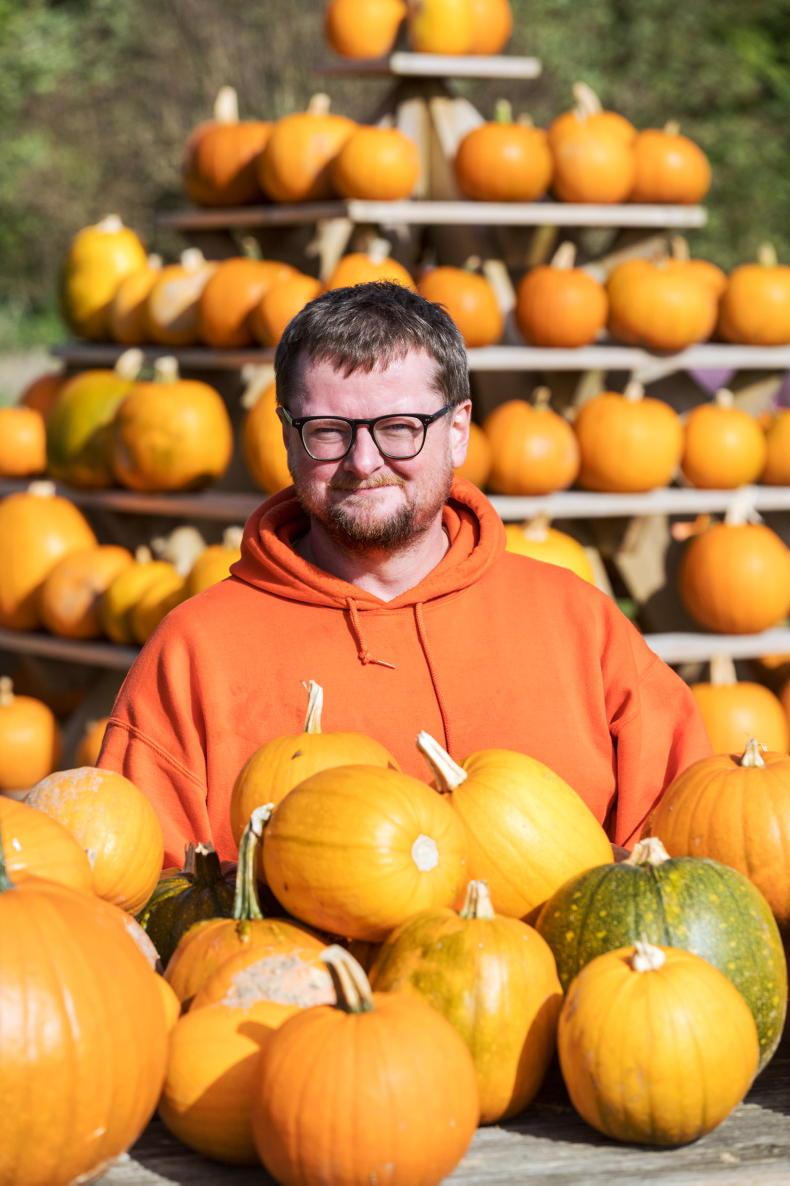
Tom Dillon runs Alright Pumpkin. \ Claire Nash
“The Hill of Tlachtga is where they reckon the first bonfire was, where the first Halloween was,” Tom explains. “Everyone started to come together and celebrate the harvest there.
“It was on Oíche Shamhna [Halloween night] that the first celebrants of Halloween said the barrier between the spirit world and the physical world became quite narrow. They reckoned the eye of fairy forts dotted around the countryside would open up and all these fairies and goblins would come out.
“They’d play tricks on everyone coming home from their harvest feasts. They’d mimic animals and mimic their friends’ voices to try and get people lost in the dark.
“So the people would hollow their turnips, mangelwurzels and the sugar beets, whatever it was that they were eating. They carved faces and put the embers from the Halloween bonfire in to try and frighten away these creatures on their way home.”
This is a story Tom has well versed.

Tom Dillon on his home farm in Co Meath. \ Claire Nash
You see, as well as the more traditional enterprises on the farm, Tom also grows pumpkins for his pumpkin patch, Alright Pumpkin. He tells this yarn every now and then while carving pumpkins at the patch.
Pumpkin patches may be an American concept, in fact, that’s exactly where Tom got the idea from initially while out there working on the harvest. However, as the above story indicates, Tom is claiming the tradition of pumpkins at Halloween as a whole as being very much Irish in origin.
“When the Irish went to America post-Famine, they brought that tradition of carving vegetables at Halloween with them,” Tom says. “There they discovered the pumpkin, which was bigger, already hollow, softer and easier to carve. So they started carving pumpkins and it became a thing over there.
“Now we’ve managed to bring it back to Ireland. A lot of people say, ‘Halloween is very American.’ It’s not, Halloween is an Irish tradition. It’s always been Irish. It was something that we celebrated for thousands of years.
“It took off in America with expats trying to keep a link to home. Now it’s very much associated with America, but it’s not an American holiday, it’s an Irish holiday. We’ve been carving pumpkins long before they have.”
Power to the patch
By anyone’s standards, Alright Pumpkin is an impressive feat to behold as it comes into view walking up the incline from the carpark. It started a decade ago.
There is a maze of maize, tractor and trailer rides, farm animals, a marquee with a corn pit, a slide, bale art and of course the actual pumpkin patch, complete with brightly coloured wheelbarrows to put your pumpkin in.

Sunflowers at Alright Pumpkin. \ Claire Nash
It opens each weekend for the month of October, with different time slots throughout the day. Tickets go on sale in September and it’s sold out (sorry guys) even though they did open up an extra time slot in the mornings to accommodate demand.
The ticket cost is a nominal fee and you pay for your pumpkin(s) thereafter if you wish.
“We only started doing tickets during COVID to keep a record of everybody that was coming,” Tom says. “The years before that, you came and if people enjoyed themselves, they’d buy loads. If you didn’t like it, it didn’t cost you anything, you could just leave. Thankfully, there were a lot more people who had great time for the pumpkin patch than didn’t.”
As well as pumpkins, Alright Pumpkin also sells other produce from the farm – potatoes, onions, carrots, sweetcorn, sunflowers and honey.
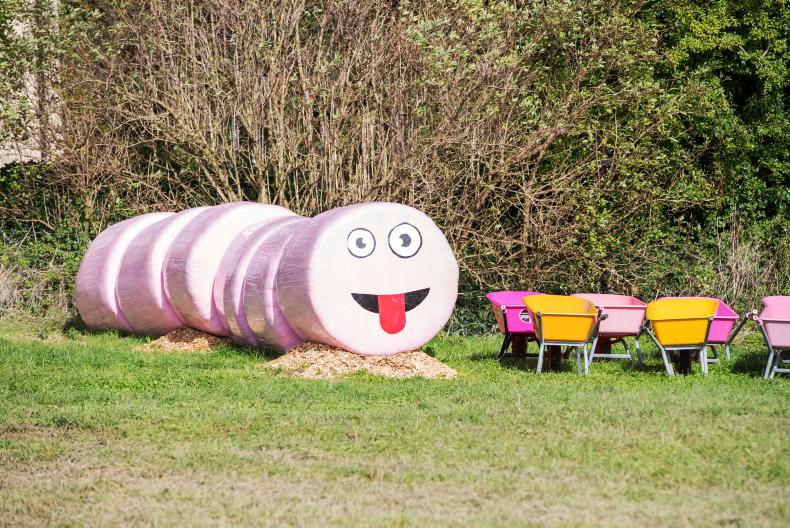
The bale worm at Alright Pumpkin. \ Claire Nash
As for the pumpkin patch’s clientele, some may assume (as this writer did) that it’s all families with children who frequent, but this is not the case.
“We’ve all kinds coming here. We’ve old couples, young couples, people on first dates, people who have been going out for a while, people getting engaged here and people announcing pregnancies here.”
I joke that the only occasion they’re missing is a wedding.
“They can get married, so long as no one starts to give birth here,” Tom laughs.
“We’ve people from the very first year that are still coming. It’s great to see. You meet people the first year and they’re a couple. You’d meet them the second year and they’re engaged. They come down the third year to have the same photograph taken with their baby and then they have another baby the next year again. We’re a part of their tradition.”
Humble beginnings
To get to the point where Alright Pumpkin is in such demand, however, there was a lot of hard graft and humble beginnings.
Although coming home to farm was on the cards at some stage for Tom, that process was accelerated. He was working in journalism and trying to get into finance, farming mostly on weekends and during the holidays, when his father became ill.
“Dad got poorly and it was just at the beginning of spring. It was calving and lambing time, cattle were in the shed.
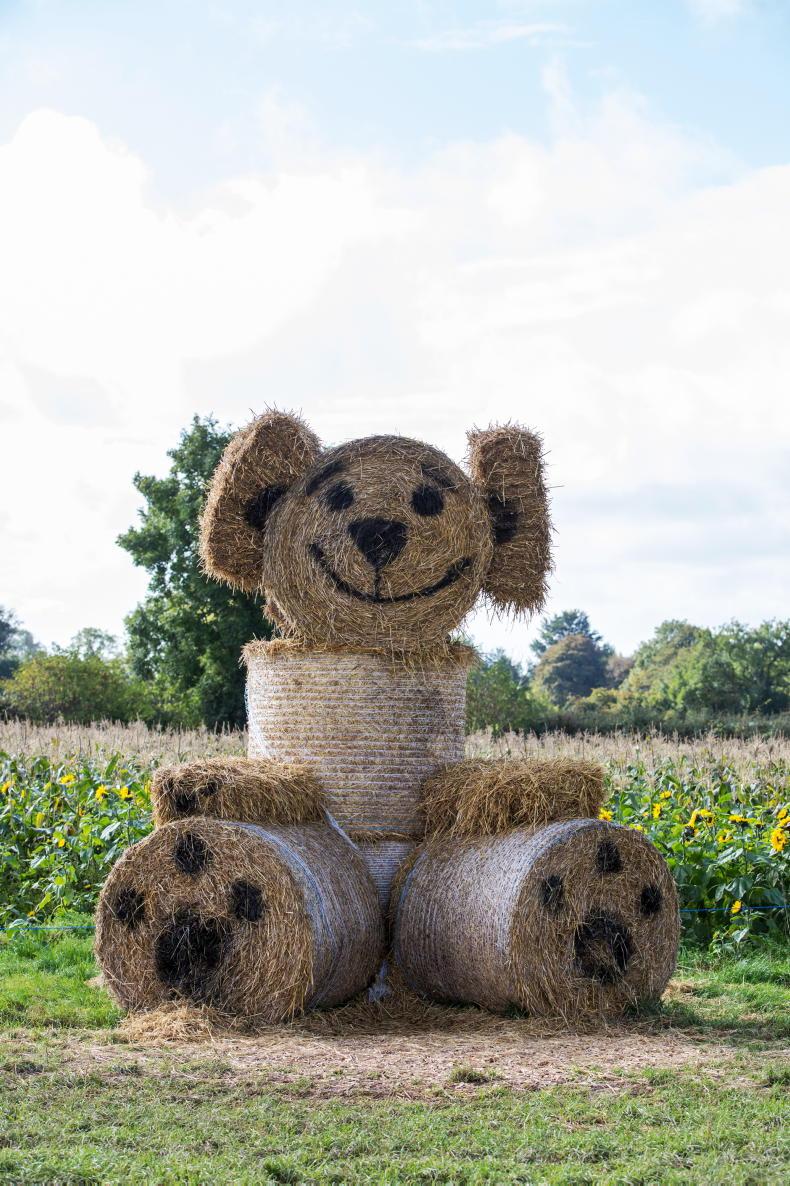
Bale art at Alright Pumpkin. \ Claire Nash
“It was like, Dad’s poorly, he’s gone into hospital, he’ll be OK and out in a month. Someone just needs to calve the cows and lamb the sheep for a few weeks. I wasn’t at anything too major at the time, so I was just like, I’ll come home, I’ll do it and I can still work away.
“Then the farm got too busy and Dad was on dialysis for four-and-a-half years, he couldn’t work. He got an anonymous kidney donor and he hasn’t looked back since, but by the time the four-and-a-half years were over, it was like, OK I’m a farmer now.”
Tom had unexpectedly found himself in a new full-time job, one he quite liked. At this point he couldn’t see himself going back to a nine to five, so he decided to try his hand at diversifying to create enough income to sustain them both on the one farm.
Thus, Alright Pumpkin was born.
It started out with Tom taking over his mother’s polytunnel to plant pumpkins, just to see would they grow. When they did, he planted some more.
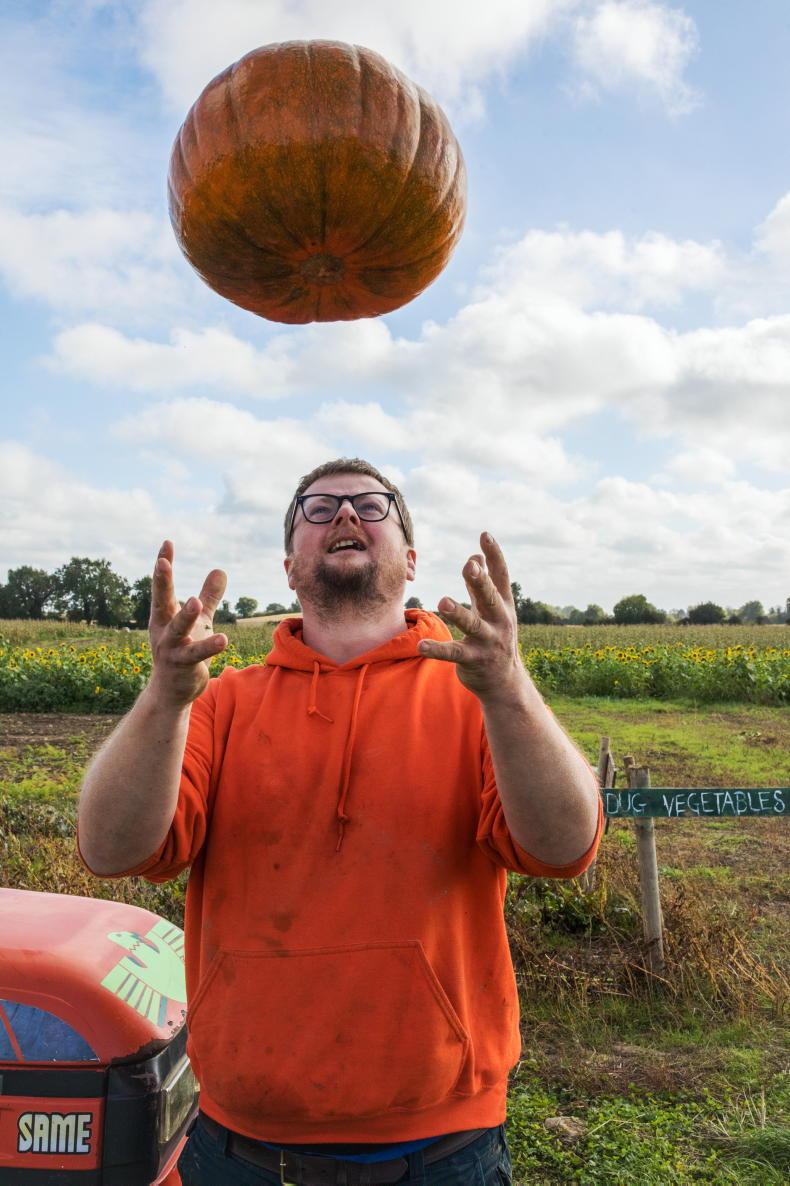
\ Claire Nash
“We grew some pumpkins away from the road because I wasn’t even sure they’d grow and I didn’t want everyone seeing it. We had oats in this field here beside the road. They didn’t do well at all. Dad was like, ‘We’re going to have to plant something else in there.’ I said, ‘I’m going to throw some pumpkins in there.’”
People came and bought the pumpkins at the side of the road. Alright Pumpkin was one of the very first pumpkin patches in Ireland. Tom and his wife Natasha did teas, coffees and baked goods, as well as having Instagram-able picture opportunities. From there it grew as they added in different elements each year to expand it.
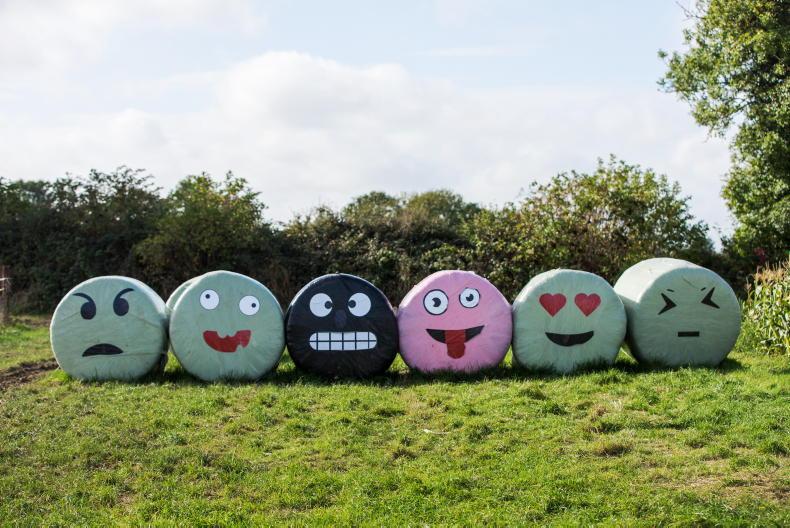
Bale art at Alright Pumpkin. \ Claire Nash
From a small start in his mother’s polytunnel, this year Tom planted 22,000 pumpkin seeds!
Hard work
Over the years there has been plenty of hard work to get Alright Pumpkin to where it is today. Including Tom missing a family wedding in the UK to water pumpkins during the drought in the summer of 2018, which he says in the end produced a great crop of pumpkins.
“I’ve never lived that one down,” he smiles ruefully. “We still meet that cousin and her husband at various other family weddings. It’s like, ‘Ah yes, Tom. That time you couldn’t come to our wedding. How are the pumpkins? Do they need watering again?’” he chuckles.
Overall, Tom’s vision for Alright Pumpkin is to align it broadly with the original Irish manifestation of the celebration centred around the harvest, and not any subsequent commercial iterations. Tom says that people want to see where the pumpkins grow and have an authentic farm experience.
“It’s a very country experience. People often ask, ‘What’s it like? We always say, ‘Bring your wellies and your wet gear, not your Sunday best. We’re a working farm.’”
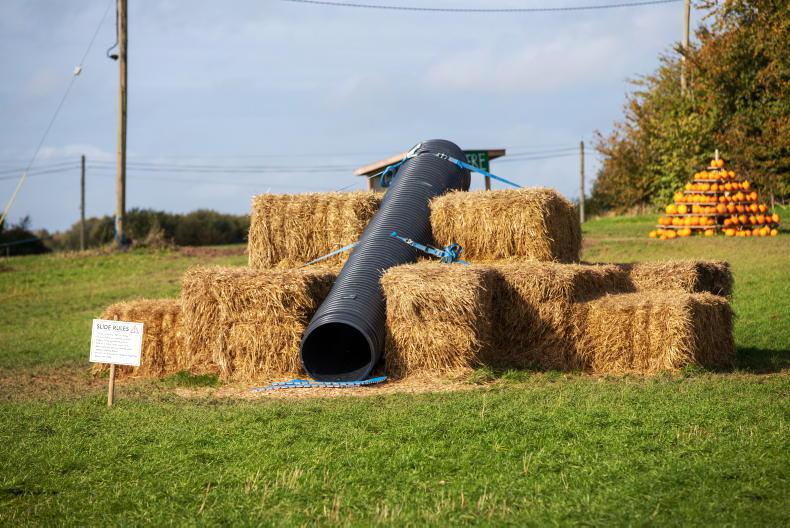
The slide at Alright Pumpkin. \ Claire Nash
“People want authenticity and a bit of wholesomeness. I’d like to think that we try and stay as wholesome as we can and avoid that cheap plastic element of Halloween. We try and avoid chewy sweets and massive amounts of sugar. We try and keep it at soups, sandwiches, tea, coffee and home bakes.”
Being a stone’s throw from where Halloween first began is also a boost when aiming for authenticity.
Visit www.alrightpumpkin.com
Read more
Samhain: when the veil separating the world is at its thinnest
Preserving a past life
In a different life, in a different country, this writer sat with a group of friends. They were primarily from other European countries, and the discussion drifted towards the topic of Halloween. The general consensus was that Halloween is a commercial holiday, celebrated in the US and not authentic enough for them to enjoy.
Of course, I gently put them straight.
I told them of Halloween’s Irish origins, with its roots in the Celtic festival of Samhain that marks the end of harvest and the beginning of winter.
I’m not going to lie, I was proud as a peacock and just a tiny bit smug.
Recently though, I met a man with a much stronger geographical claim to Halloween than I.
Irish origins
I’m on the farm of Tom Dillon outside Fordstown, Co Meath. Farming with his father, they have sucklers, sheep and tillage. Fordstown is 10 minutes outside Kells, their nearest town being Athboy.
Not far from Athboy is the Hill of Tlachtga. Named after the goddess Tlachtga in Irish mythology, it’s also known locally as the Hill of Ward. It’s here that the first Halloween bonfire is said to have been lit.

Tom Dillon runs Alright Pumpkin. \ Claire Nash
“The Hill of Tlachtga is where they reckon the first bonfire was, where the first Halloween was,” Tom explains. “Everyone started to come together and celebrate the harvest there.
“It was on Oíche Shamhna [Halloween night] that the first celebrants of Halloween said the barrier between the spirit world and the physical world became quite narrow. They reckoned the eye of fairy forts dotted around the countryside would open up and all these fairies and goblins would come out.
“They’d play tricks on everyone coming home from their harvest feasts. They’d mimic animals and mimic their friends’ voices to try and get people lost in the dark.
“So the people would hollow their turnips, mangelwurzels and the sugar beets, whatever it was that they were eating. They carved faces and put the embers from the Halloween bonfire in to try and frighten away these creatures on their way home.”
This is a story Tom has well versed.

Tom Dillon on his home farm in Co Meath. \ Claire Nash
You see, as well as the more traditional enterprises on the farm, Tom also grows pumpkins for his pumpkin patch, Alright Pumpkin. He tells this yarn every now and then while carving pumpkins at the patch.
Pumpkin patches may be an American concept, in fact, that’s exactly where Tom got the idea from initially while out there working on the harvest. However, as the above story indicates, Tom is claiming the tradition of pumpkins at Halloween as a whole as being very much Irish in origin.
“When the Irish went to America post-Famine, they brought that tradition of carving vegetables at Halloween with them,” Tom says. “There they discovered the pumpkin, which was bigger, already hollow, softer and easier to carve. So they started carving pumpkins and it became a thing over there.
“Now we’ve managed to bring it back to Ireland. A lot of people say, ‘Halloween is very American.’ It’s not, Halloween is an Irish tradition. It’s always been Irish. It was something that we celebrated for thousands of years.
“It took off in America with expats trying to keep a link to home. Now it’s very much associated with America, but it’s not an American holiday, it’s an Irish holiday. We’ve been carving pumpkins long before they have.”
Power to the patch
By anyone’s standards, Alright Pumpkin is an impressive feat to behold as it comes into view walking up the incline from the carpark. It started a decade ago.
There is a maze of maize, tractor and trailer rides, farm animals, a marquee with a corn pit, a slide, bale art and of course the actual pumpkin patch, complete with brightly coloured wheelbarrows to put your pumpkin in.

Sunflowers at Alright Pumpkin. \ Claire Nash
It opens each weekend for the month of October, with different time slots throughout the day. Tickets go on sale in September and it’s sold out (sorry guys) even though they did open up an extra time slot in the mornings to accommodate demand.
The ticket cost is a nominal fee and you pay for your pumpkin(s) thereafter if you wish.
“We only started doing tickets during COVID to keep a record of everybody that was coming,” Tom says. “The years before that, you came and if people enjoyed themselves, they’d buy loads. If you didn’t like it, it didn’t cost you anything, you could just leave. Thankfully, there were a lot more people who had great time for the pumpkin patch than didn’t.”
As well as pumpkins, Alright Pumpkin also sells other produce from the farm – potatoes, onions, carrots, sweetcorn, sunflowers and honey.

The bale worm at Alright Pumpkin. \ Claire Nash
As for the pumpkin patch’s clientele, some may assume (as this writer did) that it’s all families with children who frequent, but this is not the case.
“We’ve all kinds coming here. We’ve old couples, young couples, people on first dates, people who have been going out for a while, people getting engaged here and people announcing pregnancies here.”
I joke that the only occasion they’re missing is a wedding.
“They can get married, so long as no one starts to give birth here,” Tom laughs.
“We’ve people from the very first year that are still coming. It’s great to see. You meet people the first year and they’re a couple. You’d meet them the second year and they’re engaged. They come down the third year to have the same photograph taken with their baby and then they have another baby the next year again. We’re a part of their tradition.”
Humble beginnings
To get to the point where Alright Pumpkin is in such demand, however, there was a lot of hard graft and humble beginnings.
Although coming home to farm was on the cards at some stage for Tom, that process was accelerated. He was working in journalism and trying to get into finance, farming mostly on weekends and during the holidays, when his father became ill.
“Dad got poorly and it was just at the beginning of spring. It was calving and lambing time, cattle were in the shed.

Bale art at Alright Pumpkin. \ Claire Nash
“It was like, Dad’s poorly, he’s gone into hospital, he’ll be OK and out in a month. Someone just needs to calve the cows and lamb the sheep for a few weeks. I wasn’t at anything too major at the time, so I was just like, I’ll come home, I’ll do it and I can still work away.
“Then the farm got too busy and Dad was on dialysis for four-and-a-half years, he couldn’t work. He got an anonymous kidney donor and he hasn’t looked back since, but by the time the four-and-a-half years were over, it was like, OK I’m a farmer now.”
Tom had unexpectedly found himself in a new full-time job, one he quite liked. At this point he couldn’t see himself going back to a nine to five, so he decided to try his hand at diversifying to create enough income to sustain them both on the one farm.
Thus, Alright Pumpkin was born.
It started out with Tom taking over his mother’s polytunnel to plant pumpkins, just to see would they grow. When they did, he planted some more.

\ Claire Nash
“We grew some pumpkins away from the road because I wasn’t even sure they’d grow and I didn’t want everyone seeing it. We had oats in this field here beside the road. They didn’t do well at all. Dad was like, ‘We’re going to have to plant something else in there.’ I said, ‘I’m going to throw some pumpkins in there.’”
People came and bought the pumpkins at the side of the road. Alright Pumpkin was one of the very first pumpkin patches in Ireland. Tom and his wife Natasha did teas, coffees and baked goods, as well as having Instagram-able picture opportunities. From there it grew as they added in different elements each year to expand it.

Bale art at Alright Pumpkin. \ Claire Nash
From a small start in his mother’s polytunnel, this year Tom planted 22,000 pumpkin seeds!
Hard work
Over the years there has been plenty of hard work to get Alright Pumpkin to where it is today. Including Tom missing a family wedding in the UK to water pumpkins during the drought in the summer of 2018, which he says in the end produced a great crop of pumpkins.
“I’ve never lived that one down,” he smiles ruefully. “We still meet that cousin and her husband at various other family weddings. It’s like, ‘Ah yes, Tom. That time you couldn’t come to our wedding. How are the pumpkins? Do they need watering again?’” he chuckles.
Overall, Tom’s vision for Alright Pumpkin is to align it broadly with the original Irish manifestation of the celebration centred around the harvest, and not any subsequent commercial iterations. Tom says that people want to see where the pumpkins grow and have an authentic farm experience.
“It’s a very country experience. People often ask, ‘What’s it like? We always say, ‘Bring your wellies and your wet gear, not your Sunday best. We’re a working farm.’”

The slide at Alright Pumpkin. \ Claire Nash
“People want authenticity and a bit of wholesomeness. I’d like to think that we try and stay as wholesome as we can and avoid that cheap plastic element of Halloween. We try and avoid chewy sweets and massive amounts of sugar. We try and keep it at soups, sandwiches, tea, coffee and home bakes.”
Being a stone’s throw from where Halloween first began is also a boost when aiming for authenticity.
Visit www.alrightpumpkin.com
Read more
Samhain: when the veil separating the world is at its thinnest
Preserving a past life












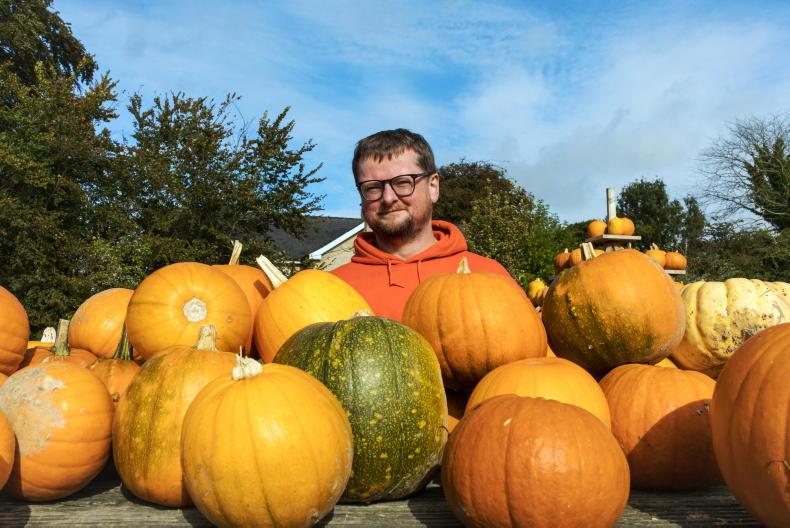
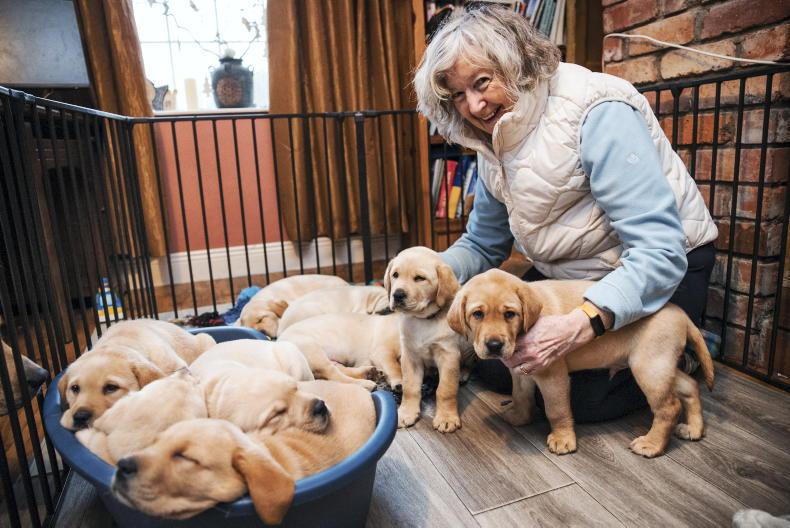
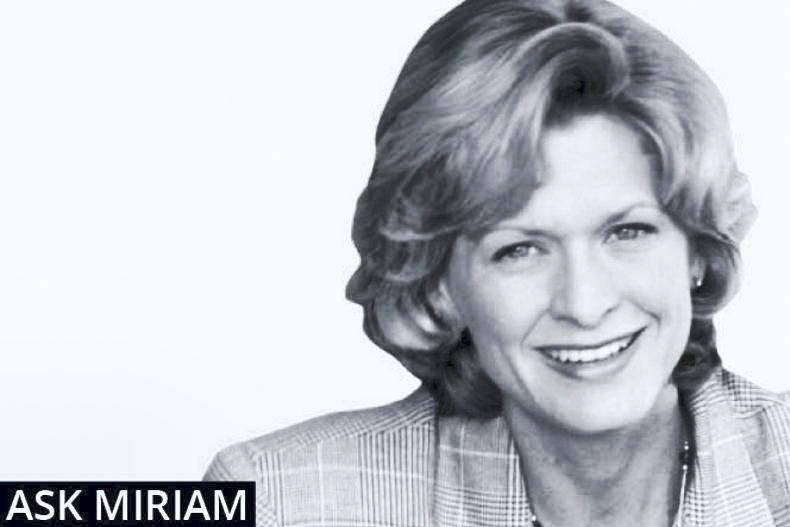
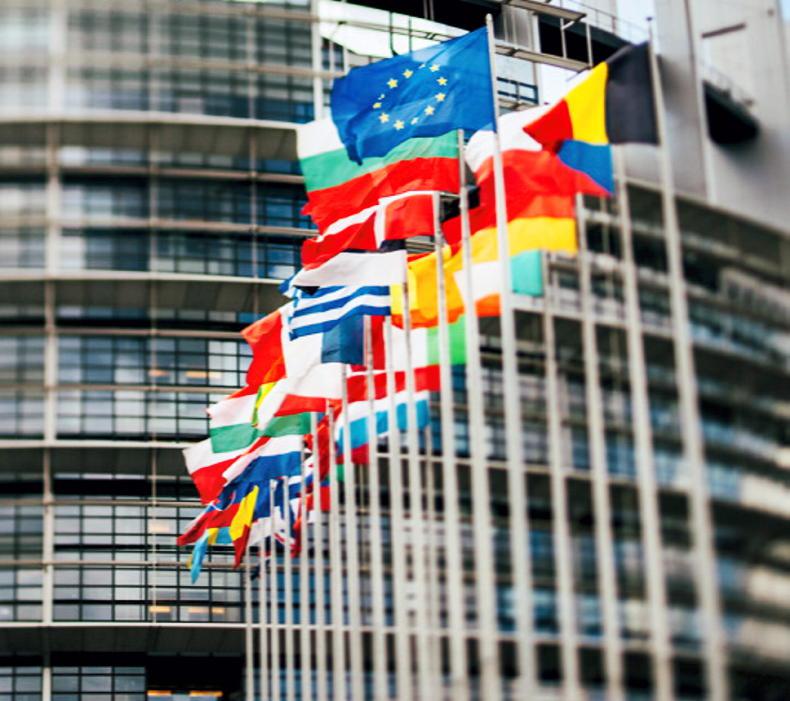
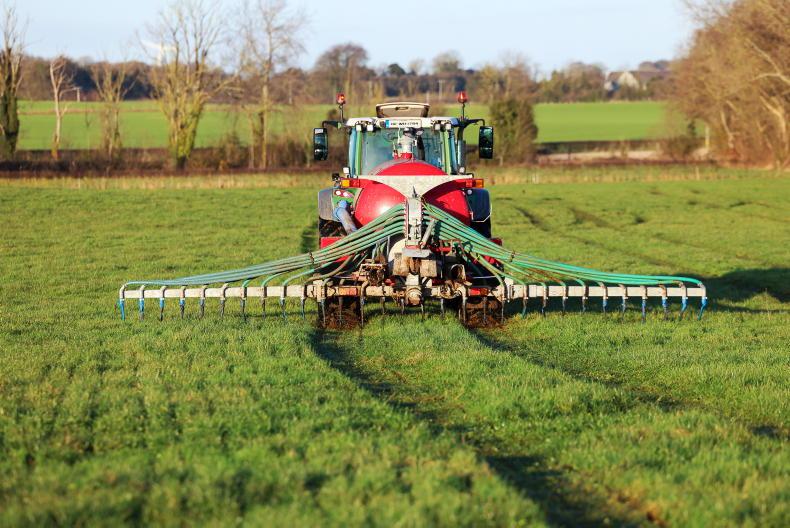
SHARING OPTIONS